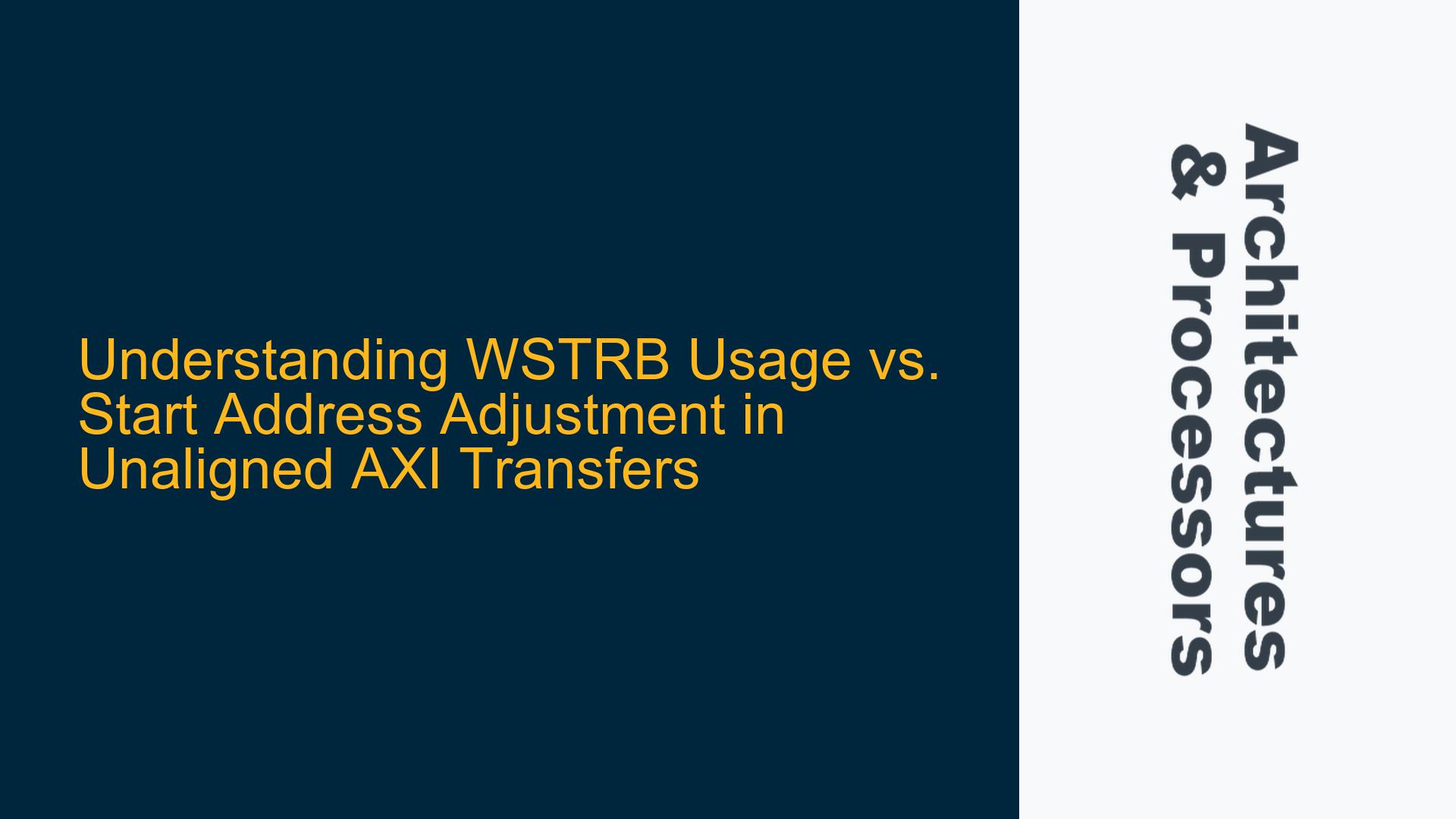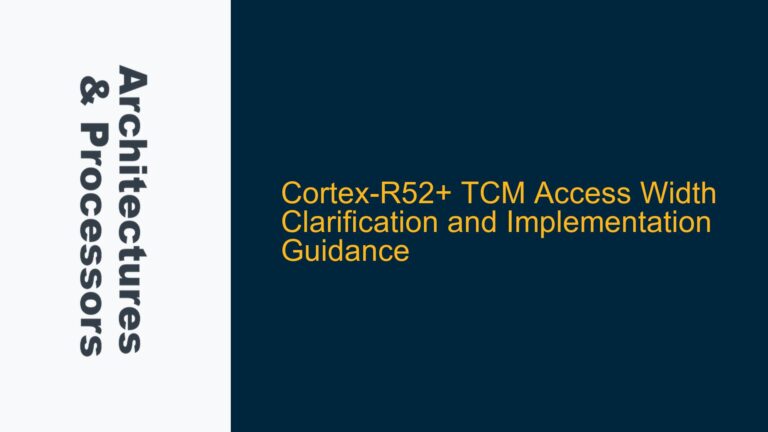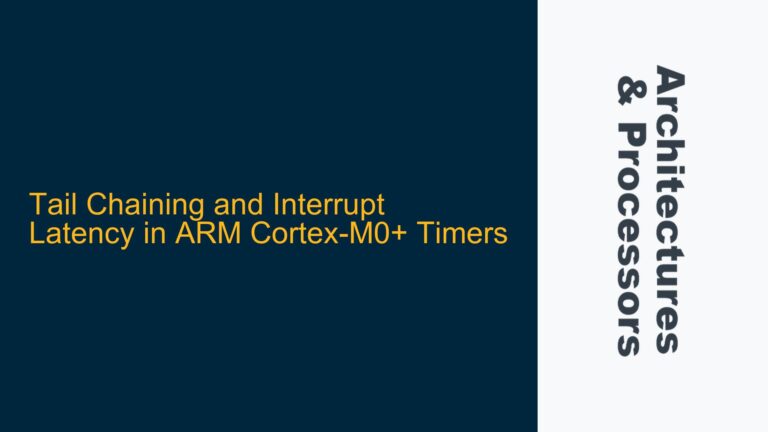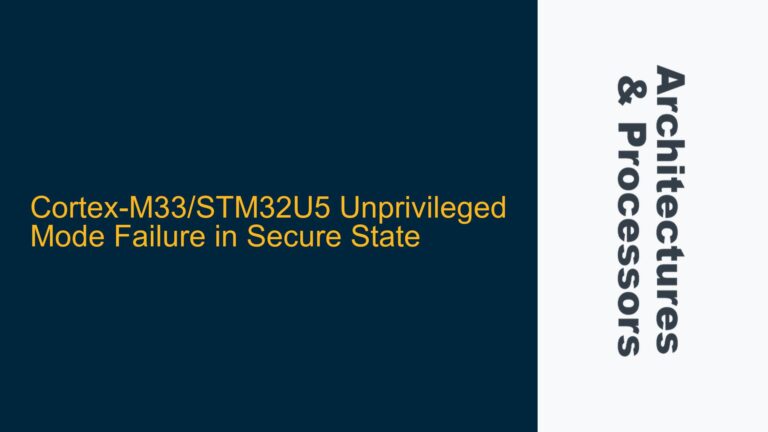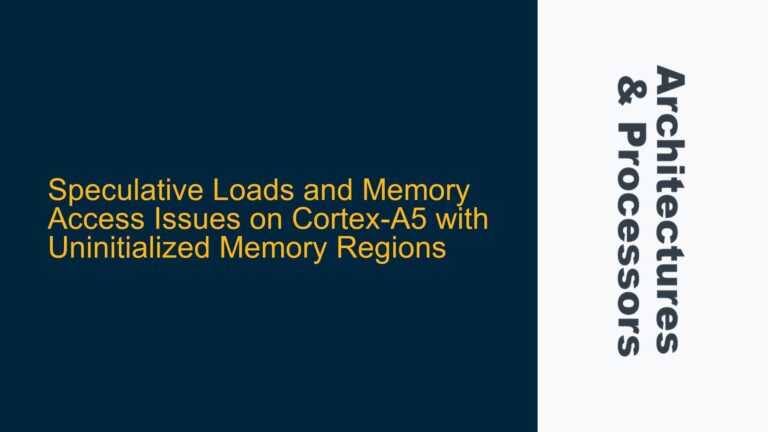Unaligned AXI Transfers: WSTRB vs. Start Address Adjustment
In ARM-based SoC designs, handling unaligned memory transfers is a common challenge, especially when working with the AXI (Advanced eXtensible Interface) protocol. Two primary methods are often discussed for managing unaligned transfers: using the WSTRB (Write Strobe) signal and adjusting the start address of the transfer. Both methods have distinct implications for the design and verification of the system, and understanding their differences is critical for efficient and correct implementation.
The WSTRB signal in the AXI protocol is used to indicate which byte lanes of the data bus contain valid data during a write transaction. Each bit in the WSTRB signal corresponds to a byte in the data bus, allowing for fine-grained control over which bytes are written to memory. On the other hand, adjusting the start address involves shifting the base address of the transfer to align with the desired data boundaries, effectively bypassing the need for WSTRB manipulation.
The choice between these methods depends on several factors, including the system’s performance requirements, the complexity of the design, and the specific use case. For instance, using WSTRB can simplify the address calculation logic but may introduce additional complexity in the data path. Conversely, adjusting the start address can streamline the data path but may require more sophisticated address generation logic.
Memory Access Patterns and AXI Protocol Constraints
The AXI protocol imposes specific constraints on memory access patterns, particularly concerning alignment. AXI transactions are typically aligned to the size of the data bus, meaning that the start address of a transfer should be a multiple of the data bus width. For example, in a 32-bit AXI system, the start address should be aligned to 4-byte boundaries. However, real-world applications often require unaligned transfers, where the start address does not conform to these alignment rules.
Unaligned transfers can occur in various scenarios, such as when dealing with data structures that are not aligned to the natural boundaries of the system or when performing memory-mapped I/O operations. In such cases, the system must handle the unaligned access in a way that complies with the AXI protocol while ensuring data integrity and minimizing performance overhead.
The WSTRB signal provides a mechanism to handle unaligned transfers by selectively enabling specific byte lanes during a write transaction. For example, if a 32-bit write transaction starts at an address that is not aligned to a 4-byte boundary, the WSTRB signal can be used to indicate which bytes within the 32-bit data word should be written to memory. This approach allows the system to perform unaligned writes without requiring the start address to be adjusted.
However, using WSTRB for unaligned transfers can introduce complexity in the data path, particularly when dealing with burst transactions. In burst mode, the AXI protocol allows multiple data transfers to be performed in a single transaction, with the address incrementing automatically for each transfer. When using WSTRB for unaligned transfers in burst mode, the system must ensure that the WSTRB signal is correctly calculated for each data beat in the burst, which can be challenging to implement and verify.
Adjusting the start address of the transfer is an alternative approach to handling unaligned transfers. By shifting the start address to align with the desired data boundaries, the system can perform aligned transfers, simplifying the data path and reducing the complexity of the WSTRB calculation. However, this approach requires careful management of the address generation logic, particularly when dealing with burst transactions.
In burst mode, adjusting the start address may require the system to split the burst into multiple transactions, each with a different start address. This can introduce additional latency and complexity in the address generation logic, particularly when dealing with long bursts or complex memory access patterns.
Implementing and Verifying Unaligned AXI Transfers
When implementing unaligned AXI transfers, it is essential to consider the trade-offs between using WSTRB and adjusting the start address. The choice of method will depend on the specific requirements of the system, including performance, complexity, and verification considerations.
Using WSTRB for unaligned transfers can simplify the address generation logic but may introduce additional complexity in the data path. This approach is particularly well-suited for systems where the majority of transfers are aligned, and unaligned transfers are relatively rare. In such cases, the additional complexity in the data path may be justified by the simplification of the address generation logic.
However, in systems where unaligned transfers are common, adjusting the start address may be a more efficient approach. By aligning the start address, the system can perform aligned transfers, simplifying the data path and reducing the complexity of the WSTRB calculation. This approach is particularly well-suited for systems with stringent performance requirements, where minimizing latency and maximizing throughput are critical.
When verifying unaligned AXI transfers, it is essential to consider both functional and performance aspects. Functional verification should ensure that the system correctly handles unaligned transfers, including the correct calculation of the WSTRB signal and the correct generation of the start address. Performance verification should ensure that the system meets its performance requirements, including latency and throughput, under various memory access patterns.
Functional verification of unaligned AXI transfers can be challenging, particularly when dealing with burst transactions. The verification environment must be able to generate a wide range of test cases, including unaligned transfers of varying lengths and alignments. The verification environment should also be able to monitor the WSTRB signal and the start address to ensure that they are correctly calculated and applied.
Performance verification of unaligned AXI transfers should focus on measuring the impact of unaligned transfers on the system’s performance. This includes measuring the latency and throughput of unaligned transfers under various memory access patterns and comparing them to the performance of aligned transfers. The verification environment should also be able to measure the impact of unaligned transfers on the system’s power consumption, particularly in systems with stringent power requirements.
In conclusion, handling unaligned AXI transfers in ARM-based SoC designs requires careful consideration of the trade-offs between using WSTRB and adjusting the start address. The choice of method will depend on the specific requirements of the system, including performance, complexity, and verification considerations. By understanding the implications of each method and implementing a robust verification strategy, designers can ensure that their systems handle unaligned transfers efficiently and correctly.
